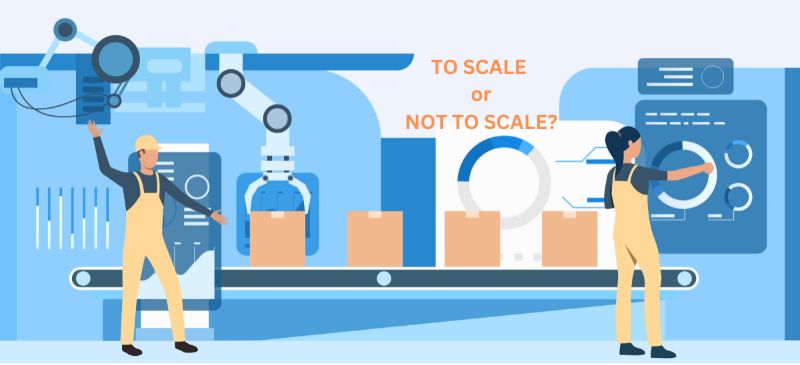Introduction
In today’s fast-paced business environment, automation is no longer a luxury—it’s a necessity. For small businesses, automating processes using AI and agents can significantly reduce inefficiencies, save time, and improve customer satisfaction. Whether you’re running a retail store, a consultancy firm, or a local service provider, leveraging AI-powered tools can help you streamline operations and focus on growing your business. This blog will guide you through the steps to identify opportunities for automation and implement them effectively, tailored to your specific needs.
Identifying Pain Points and Inefficiencies
The first step in automating your business processes is understanding where the inefficiencies lie. By conducting a thorough analysis of your current workflows, you can uncover areas that are ripe for improvement.
How to Analyze Current Business Processes
Start by mapping out your existing workflows. Identify every step involved in key processes such as customer onboarding, inventory management, or invoicing. Use tools like flowcharts to visualize these operations and highlight areas where manual intervention slows things down.
Methods for Identifying Repetitive Tasks and Bottlenecks
Look for tasks that are repetitive or prone to human error—these are prime candidates for automation. For example:
- Repetitive Tasks: Data entry, appointment scheduling, or responding to common customer inquiries.
- Bottlenecks: Delays caused by manual approvals or lack of real-time communication between departments.
Gathering Feedback from Employees and Customers
Employees often have firsthand knowledge of inefficiencies in their daily tasks. Conduct surveys or hold brainstorming sessions to gather their input. Similarly, ask customers about their experience interacting with your business—this can reveal pain points in customer service or fulfillment processes.
Documenting and Categorizing Tasks
Once you’ve identified inefficiencies, the next step is documenting and organizing them systematically.
Creating a System for Documentation
Use spreadsheets or project management tools like Trello or Asana to document each process. Include details such as:
- Task name
- Description of the process
- Time taken to complete the task manually
- Frequency (daily, weekly, monthly)
Categorizing Tasks Based on Department, Frequency, and Complexity
Group tasks by department (e.g., sales, operations, customer service) and categorize them based on how often they occur and how complex they are. For example:
- High Frequency & Low Complexity: Ideal candidates for automation (e.g., sending follow-up emails).
- Low Frequency & High Complexity: May require more advanced AI solutions.
Suggested Template for Organizing Information
Use a simple table format:
| Task Name | Department | Frequency | Complexity | Notes |
|---|---|---|---|---|
| Invoice Generation | Accounting | Weekly | Low | Manual entry required |
| Customer Support Emails | Customer Service | Daily | Medium | Responses are repetitive |
Prioritizing Tasks for Automation
Not all tasks should be automated immediately—you need to prioritize based on impact and feasibility.
Concept of Prioritizing Based on Pain Level and Economic Value
Rank tasks based on:
- Pain Level: How much inefficiency or frustration the task causes.
- Economic Value: The potential savings in time or money if automated.
Method for Scoring Tasks
Create a scoring system:
- Pain Level: 1 (low) to 5 (high)
- Economic Value: 1 (low) to 5 (high)
Calculate a total score by adding these values together.
Creating a Prioritized List
Focus first on tasks with high scores. For example:
| Task Name | Pain Level | Economic Value | Total Score |
|---|---|---|---|
| Data Entry | 4 | 5 | 9 |
| Social Media Scheduling | 3 | 4 | 7 |
Visual Aids for Better Understanding
Visual aids can make the process of identifying and implementing automation much clearer.
Process Flow Chart
Create a flowchart of current workflows to visualize inefficiencies. For example:
- Start → Customer Inquiry → Manual Response → Follow-Up → Resolution
Matrix or Quadrant Chart for Prioritizing Tasks
Use a quadrant chart with axes labeled “Pain Level” and “Economic Value” to categorize tasks into four groups:
- High Pain & High Value (Automate Immediately)
- High Pain & Low Value (Consider Automating)
- Low Pain & High Value (Automate if Feasible)
- Low Pain & Low Value (Low Priority)
Timeline or Gantt Chart for Implementation
Develop a timeline showing phases of automation implementation:
- Phase 1: Automate high-priority tasks (Month 1–2)
- Phase 2: Evaluate results and refine processes (Month 3–4)
- Phase 3: Expand automation to other areas (Month 5–6)
Conclusion
Automating small business processes using AI and agents is not just about saving time—it’s about creating a more efficient, scalable business model that allows you to focus on growth. By identifying pain points, documenting tasks systematically, prioritizing based on impact, and using visual aids to guide implementation, you can start your automation journey with confidence.
Take the first step today—analyze your workflows, explore AI tools tailored to your industry, and begin transforming your business processes for the better!
